This page was last updated on: April 13, 2003
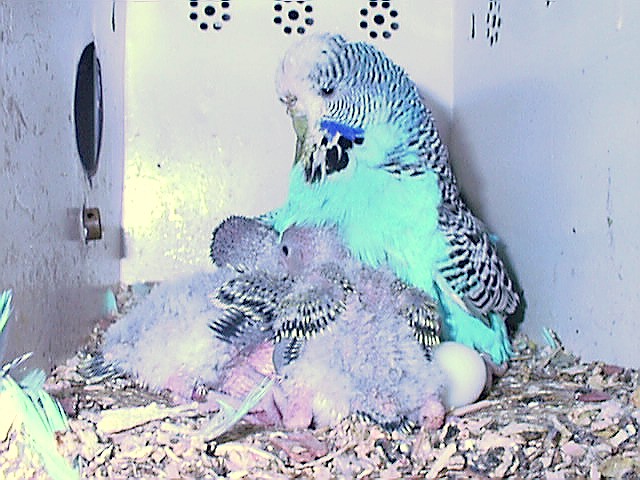
">
">
">
">
This a picture of a Skyblue hen and her babies. She is very protective of her chicks. |
">
">
">
">
I have been breeding Exhibition budgies since 1976 and I have bred many varieties and colours. My favorite varieties are Spangles and Dilutes. I like to breed a hen only once, I don't let her raise another round, I found problems with frustrated hens after to much breeding. I also like to keep small clutches, 3 or 4 chicks in a nest is ideal. Anymore and the last chick will loose out with too much competion form the older chicks. The hen usually lays between 4 - 6 eggs, with the first egg usually clear. Once the fertility of the eggs are established, I like to move the extra eggs to a foster hen. I set up a pair that I know, either the cock or hen is sterile, and let them lay a clutch of eggs, which can be exchanged with fetile eggs from a pair that has too many. Sometimes the parents of the birds stop feeding their chicks when the chicks are about 4 -5 weeks old. This happens because they want to go to nest again. In this case either the hen in taken out to that the cock bird can feed the chicks, or they are moved to another nest with the same age chicks or they are hand fed, like in the picture above. |
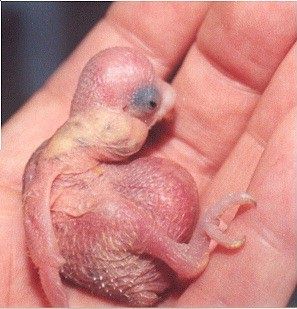
Here is a picture of a 6 day old chcik ready for banding. It has a strange postion of the crop but nothing to worry about. The chick grew up to be a fine and normal bird. |
">
">
">
">

">
">
">
">
Here is a picture of a baby being hand fed. |
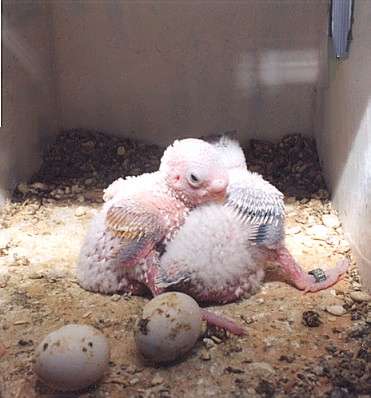
">
">
">
">
It is the happiest time of the year to breed new babies, so see what colour they babies are and watch them grow and with each new baby there is that question. "Will this one be a show stopper or another Best in show winner"? The 2 babies above tuned out to be dilutes or a white and a yellow. My favourite variety is the Dilute. |
Dilute babies 2 weeks old. |
">
">
">
">

">
">
">
">
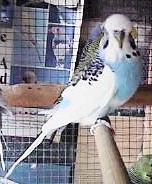
">
">
">
">
This old adult Skyblue Dominant Pied appeared to developed a form of adult French Moult. |
Flights and Tail feathers can come back with vitamin D treatment. |
Budgies can have many problems and one of the major problems are problems with feathers. In this picture this bird was a normal bird as a youngster but as he got older he developed this feather problem. This type of feather problems happens in nest featherbirds, either still in the nest box or just coming out of it. It is called 'French Moult'. It can be controlled by throughly cleaning the next boxes and cages only, with Cidex 7, a very powerful anti-viral solution. The old Skylue Dominant Pied appears to have french moult but it is really a lack of vitamin D which has caused the feathers to look like a French moult bird. A dose of Cod Liver oil in the soaked seeds over a series of weeks will clear up this problem. Another type of feather problem is genetic and is usually fatal. Birds that have this are called 'Feather Dusters'. They can really fool you in the nest! You think that you have a very large bird taht will you Best in Show and they turnout to be these birds. They are the retarted version of budgies with mongoloid eyes and funny sounding chirps. They started out growing large and fast with funny feathers th keep on growing until they die. Fluffy lived only just over 1 year. |
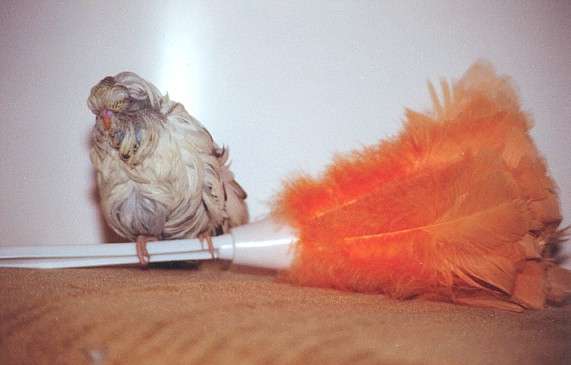
">
">
">
">
'Fluffy' the feather Duster sitting on a Feather Duster. |
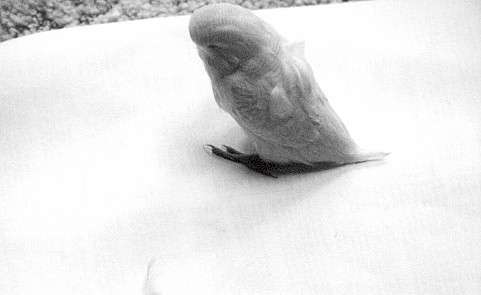
">
">
">
">
This baby bird lost all its flights and tail feathers due to French Moult. |
">
">
">
">
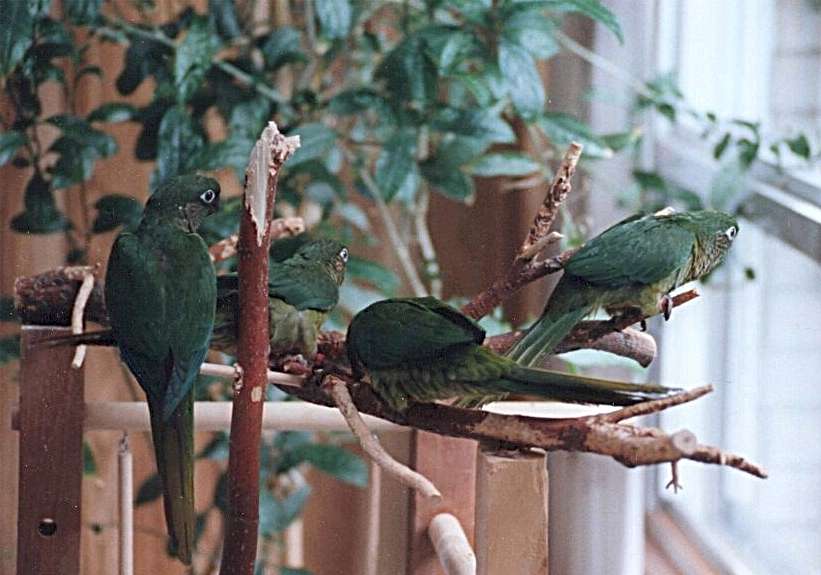
">
">
">
">
Here is a photo of baby Maroon Bellied Conures which I bred. They are in the front room playing. |
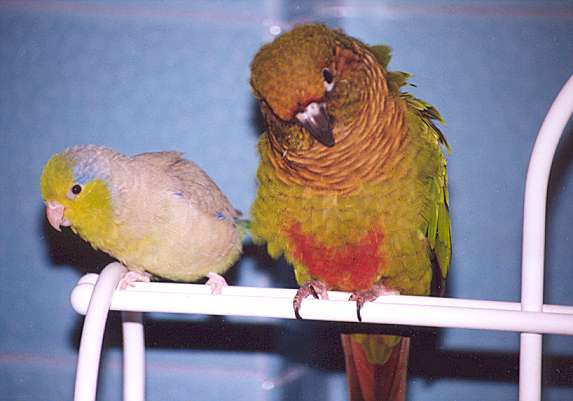
">
">
">
">
This is a picture of Connie, the mother of the baby conures, and Bibi, the Pacific Parotlet. Bibi recently died of cancer. |
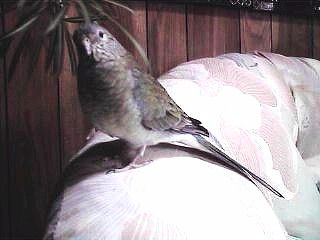
">
">
">
">
This is a picture of Birdie the Red Rumped Pararkeet |
I only have 2 other birds now, Connie the Conure and Birdie the Red rumped Parakeet. I do not breed Parrots anymore. These birds are kept away from the budgies so that they do not bother the budgies while they are breeding. They birds are my pets as well as my show birds. They have won many awards at the Annual All Bird Shows in the fall. |
